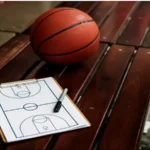In a world filled with complex social issues, new terms and phrases often emerge to describe phenomena that might have previously gone unnoticed or misunderstood. “Precipitation Probable Facial Abuse” is one such term that may seem perplexing at first glance, but it carries significant weight when understood in the right context. This article aims to delve into this phrase, unraveling its meaning, implications, and relevance in today’s society. We’ll explore how it relates to broader issues, the psychological impact it may have, and why it’s essential to address such concerns proactively.
Understanding the Term: What is Precipitation Probable Facial Abuse?
To break down the term “Precipitation Probable Facial Abuse,” we must first understand its components:
- Precipitation: This term typically refers to the process of something happening suddenly or unexpectedly. It can also relate to weather phenomena, but in this context, it’s more about the rapid occurrence of an event.
- Probable: Denoting that something is likely to happen, this word suggests a high likelihood or probability of an event occurring.
- Facial: Directly relating to the face, this component is key to understanding the physical and emotional implications of the term.
- Abuse: Abuse generally refers to any form of mistreatment, whether physical, emotional, or psychological. It implies harm and often occurs in a power-imbalanced relationship.
When combined, the term could be interpreted as the sudden and likely occurrence of abuse that targets or involves the face. However, it’s crucial to recognize that the term might also have metaphorical connotations, extending beyond just physical harm.
The Layers of Abuse: Physical, Emotional, and Psychological
“Facial abuse” can be understood in several ways, encompassing a spectrum of abusive behaviors:
- Physical Abuse: This is perhaps the most direct interpretation Precipitation Probable Facial Abuse. Physical abuse targeting the face can include slapping, punching, or other forms of violence that leave visible marks. The face, being one of the most sensitive and expressive parts of the body, when attacked, can cause not just physical pain but also significant emotional trauma.
- Emotional and Psychological Abuse: Beyond the physical, “facial abuse” can also refer to the emotional and psychological impact of actions that degrade or humiliate a person, particularly in a manner that affects their self-esteem or self-image. This could include verbal abuse that makes someone feel ashamed of their appearance or actions that cause deep psychological scars.
- Social and Cultural Implications: In some contexts, “facial abuse” might metaphorically relate to societal pressures and standards of beauty that can lead to self-harm or low self-esteem. The term “precipitation probable” could suggest that such abuse is not just possible but likely in environments where unrealistic beauty standards are enforced.
The Psychological Impact: Scars That Run Deep
The face is central to our identity, both in how we see ourselves and how others perceive us. This makes any abuse directed at the face particularly damaging. Victims of such abuse may experience:
- Low Self-Esteem: Repeatedly being told or made to feel that their appearance is flawed can lead to chronic low self-esteem. This can affect a person’s ability to form healthy relationships and pursue opportunities.
- Depression and Anxiety: The constant fear of being judged or abused for one’s appearance can lead to mental health issues such as depression and anxiety Precipitation Probable Facial Abuse. This is particularly true if the abuse is ongoing and unaddressed.
- Body Dysmorphia: In extreme cases, victims may develop body dysmorphic disorder, a mental health condition where a person becomes obsessively concerned with perceived flaws in their appearance. This can lead to self-harm or even suicidal thoughts.
Societal Pressures and the Role of Media
The concept of “facial abuse” is not only tied to individual interactions but also to broader societal pressures. The media plays a significant role in shaping beauty standards and can inadvertently contribute to this form of abuse. Consider the following:
- Unrealistic Beauty Standards: The media often portrays an idealized version of beauty that is unattainable for most people. This can lead to feelings of inadequacy and the belief that one must conform to these standards to be accepted or loved.
- Social Media Influence: Platforms like Instagram and TikTok, where image is everything, can exacerbate these feelings. The constant bombardment of edited and filtered images can make users feel that they are not good enough as they are, leading to psychological distress.
- Cultural Expectations: In some cultures, there is immense pressure to look a certain way, which can lead to extreme measures such as cosmetic surgery, skin lightening, or other forms of physical alteration. While these actions may be taken willingly, they can also be seen as a form of self-abuse driven by external expectations.
Recognizing and Addressing Precipitation Probable Facial Abuse
Given the potential severity of this issue, it’s important to recognize the signs of facial abuse, whether physical or psychological and to take steps to address it:
- Awareness and Education: Raising awareness about the different forms of facial abuse is the first step toward prevention. This can be done through educational programs, media campaigns, and open discussions about the impact of unrealistic beauty standards.
- Support Systems: Victims of facial abuse need access to support systems, including counseling and therapy. These services can help individuals rebuild their self-esteem and cope with the psychological effects of abuse.
- Challenging Societal Norms: Challenging societal norms that contribute to facial abuse is essential. This includes advocating for more diverse representations of beauty in the media and encouraging people to embrace their unique features.
- Legal Protections: In cases of physical abuse, legal protections must be in place to ensure that perpetrators are held accountable. This includes laws that protect against domestic violence and assault.
The Role of Individuals: Fostering a Culture of Acceptance
While societal change is crucial, individual actions also play a significant role in combating precipitation probable facial abuse. Here’s how individuals can contribute:
- Promote Positive Body Image: Encourage others to embrace their natural appearance and avoid making negative comments about someone’s looks. Complimenting and supporting diverse forms of beauty can help shift cultural perceptions.
- Be Mindful of Language: Words have power. Avoid using derogatory terms or making jokes that could be hurtful to others. What might seem like a harmless comment can have lasting effects on someone’s self-esteem?
- Support Victims: If you know someone who has experienced facial abuse, whether physical or emotional, offer them your support. Listen to their experiences without judgment and encourage them to seek professional help.
- Challenge Harmful Norms: When you encounter media or cultural narratives that promote unrealistic beauty standards, challenge them. Support media outlets and brands that showcase diversity and authenticity.
Conclusion: Building a Compassionate Society
Precipitation probable facial abuse is a term that encapsulates a range of harmful behaviors and societal pressures that can deeply affect individuals. Whether through physical violence, emotional manipulation, or societal expectations, the abuse directed at someone’s face can leave lasting scars, both visible and invisible.
As we move forward, we must foster a culture of acceptance and compassion, where individuals are valued for who they are rather than how they look. By raising awareness, supporting victims, and challenging harmful norms, we can work towards a society where facial abuse is no longer probable, but rather a rare and unacceptable occurrence.










